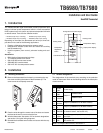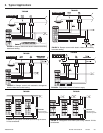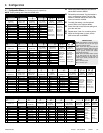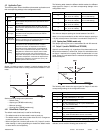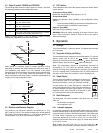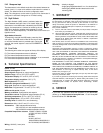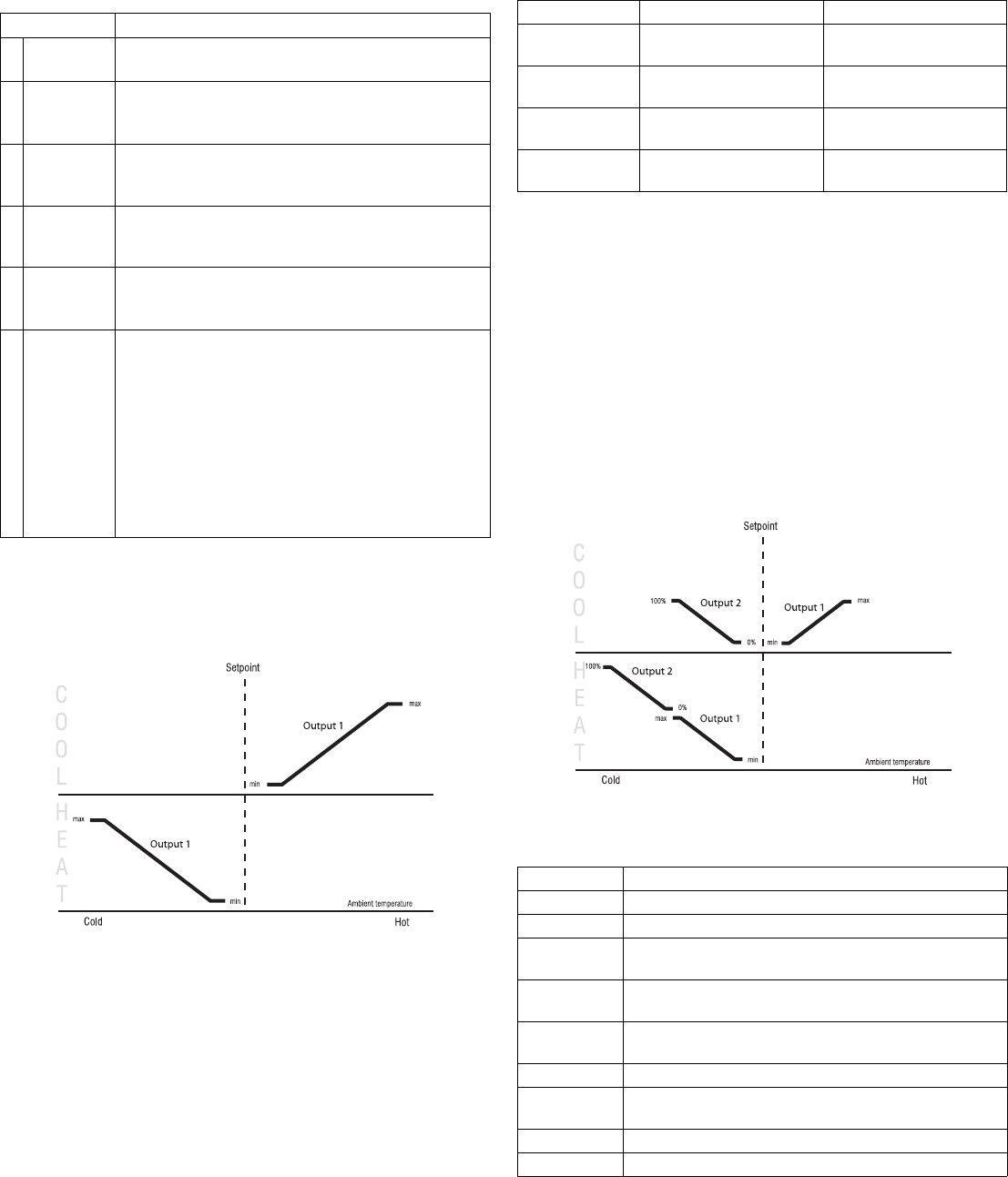
TB6980/TB7980 62-0238 400-150-005-B 3/23/06 4/6
4.2 Application Types
The following table shows the different thermostat applications and
their corresponding settings in the configuration menu.
4.3 Output 1
Output 1 is used to control a damper. It controls heating when the
thermostat is in heat mode or cooling when the thermostat is in cool
mode.
Set the following configuration parameters:
• Default mode
• Output type (TB7980 models only)
• Minimum opening
• Opening time (TB6980 models only)
4.3.1 Default Mode / Output Type
The default mode (heat/cool) is used for the following:
• The default mode is the thermostat’s mode at power-up.
• The default mode is the active mode when the N.O. changeover
contact is open (see section 5.4.2).
• When configured as a contact (see section 4.5), Output 3 controls
either heating or cooling depending on whether the default mode
is set to heat or cool respectively.
The following table shows the different default modes, the different
output types for Output 1, and their corresponding settings in the
configuration menu.
4.3.2 Minimum Opening
The minimum damper opening can be set between 0 and 50 %.
Note: It is not recommended to set the minimum damper opening to
0 % (fully closed) when a duct heater is connected to Output 2 or 3.
4.3.3 Opening time (TB6980 models only)
The damper opening time can be set between 80 and 160 seconds.
4.4 Output 2 (models TB6980B and TB7980B)
Output 2 controls heating only, regardless of the thermostat’s mode.
When the thermostat is in heat mode, Output 2 is activated as soon
as Output 1 reaches its full capacity. When the thermostat is in cool
mode, Output 2 is activated when the measured temperature drops
below the setpoint.
The following table shows the output types for Output 2 and their
corresponding settings in the configuration menu.
Note: If 0-4 is selected, set the SW6 switch to Triac. If 5-8 is
selected, set the switch to Analog (see section 4.7)
Menu setting Description
0
Internal
sensor
To control the ambient temperature using the internal
(built-in) sensor
1Room
To control the ambient temperature using the
50014156-002 temperature sensor (the internal sensor
is not used)
2 Air return
To control the temperature at the air return using the
50014157-001 temperature sensor (the internal sensor
is not used)
3 Air supply
To control the temperature at the fresh air supply using
the 50014157-001 temperature sensor (the internal
sensor is not used)
4
Automatic
changeover
To control the ambient temperature using the internal
sensor. The 50014157-001 temperature sensor is used
for automatic changeover. See section 5.4.1.
5
Limited
cooling
To use the outdoor air for cooling whenever possible.
The 50014157-001 temperature sensor is used to
measure the outdoor air temperature. The internal
temperature sensor measures the room temperature
which is then compared with the setpoint. If the room
temperature is lower than the setpoint, the air intake
damper remains closed. If the room temperature is
higher than the setpoint, the latter is then compared with
the outdoor temperature. If the fresh air temperature is
lower than the setpoint by more than 3°C (5.4°F), the
damper opens to allow cool air in.
Menu setting TB7980 models TB6980 models
0
Cool / 0-10 V analog
(max. of 10 min. refresh)
Cool
(24 V tri-state floating)
1
Heat / 0-10 V analog
(max. of 10 min. refresh)
Heat
(24 V tri-state floating)
2
Cool / 2-10 V analog
(max. of 10 min. refresh)
3
Heat / 2-10 V analog
(max. of 10 min. refresh)
Menu setting Description
0 Not used
1 24 VAC pulsed (triac) / 1 sec. cycle
2
24 VAC pulsed (triac) / 10 min. cycle / direct action
(e.g., N.C. thermal valve)
3
24 VAC pulsed (triac) / 10 min. cycle / reverse action
(e.g., N.O. thermal valve)
4
24 VAC pulsed (triac) / 15 min. cycle (e.g., mechanical
relay such as R841)
5 0-10 V pulsed / 1 sec. cycle
6
0-10 V analog / 1 sec. refresh
(e.g., SCR controlled device such as a re-heater)
7 0-10 V analog / max. of 10 min. refresh (e.g., valve)
8 2-10 V analog / max. of 10 min. refresh (e.g., damper)



